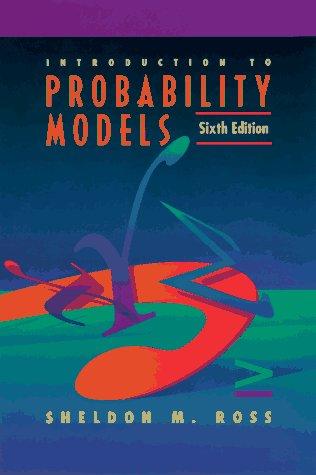Suppose that independent trials, each of which is equally likely to have any of m possible outcomes,
Question:
Suppose that independent trials, each of which is equally likely to have any of m possible outcomes, are performed until the same outcome occurs k consecutive times. If N denotes the number of trials, show that E[N] m* - 1 m Some people believe that the successive digits in the expansion of 3.14159... are "uniformly" distributed. That is, they believe that these digits have all the appearance of being independent choices from a distribution that is equally likely to be any of the digits from 0 through 9.
Possible evidence against this hypothesis is the fact that starting with the 24,658,601st digit there is a run of nine successive 7's. Is this information consistent with the hypothesis of a uniform distribution? To answer this, we note from the preceding that if the uniform hypothesis were correct, then the expected number of digits until a run of nine of the same value occurs is (10-1)/9 111,111,111 Thus, the actual value of approximately 25 million is roughly 22 percent of the theoretical mean. However, it can be shown that under the uniformity assumption the standard deviation of N will be approximately equal to the mean. As a result, the observed value is approximately 0.78 standard deviations less than its theoretical mean and is thus quite consistent with the uniformity assumption.
Step by Step Answer:







